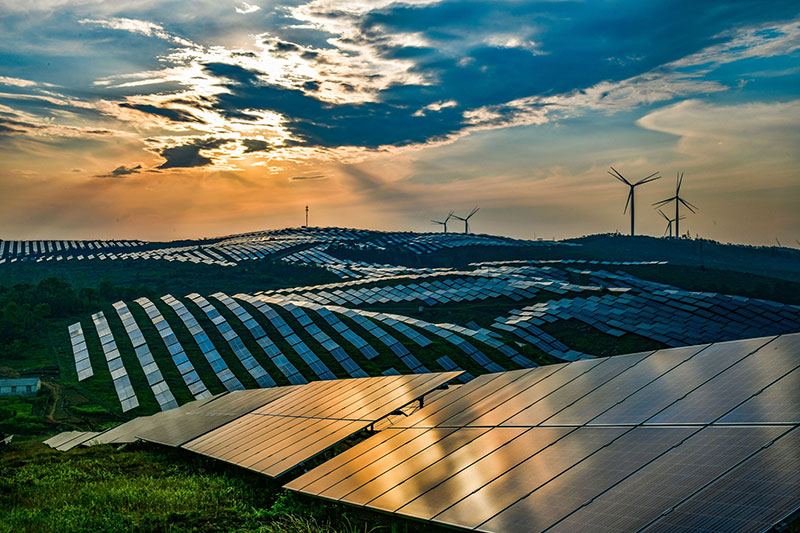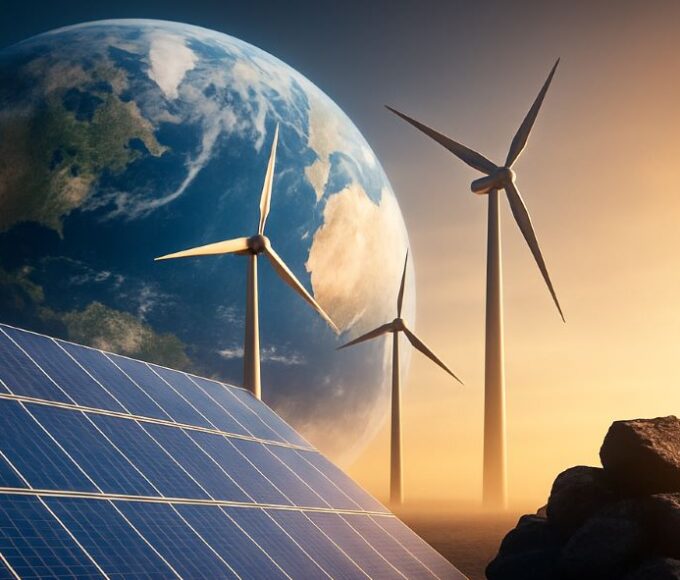Recently, the International Renewable Energy Agency (IRENA) and the global energy think tank Ember have successively released reports, taking stock of the progress made in global renewable energy electricity generation.
According to related studies, against the backdrop of the increasingly unstable global supply of fossil energy and the worsening climate change caused by greenhouse gas emissions, renewable energy will continue to experience rapid development.
On May 8th, Ember, the global energy think tank, released a report “Global Electricity Review 2024”, stating that in 2023, the proportion of renewable energy electricity generation in global electricity generation exceeded 30% for the first time, with nearly 40% of global electricity coming from low-carbon sources including nuclear power. As a result, the carbon intensity of global electricity generation hit a historic low, 12% lower than its peak in 2007. The report suggests that 2023 may mark a turning point in the carbon emissions of the electricity industry.

The report released by Ember is based on statistical data from the United Nations, the International Energy Agency, some regional international organizations, and multiple national governments. It covers 80 major countries worldwide, accounting for 92% of global electricity demand, as well as historical data from 215 countries.
The report states that solar energy was the main source of global electricity growth in 2023 and a highlight of renewable energy development. Solar energy maintained its position as the fastest-growing source of electricity for the 19th consecutive year and surpassed wind energy for the second consecutive year to become the largest new source of electricity.
In April of this year, IRENA released the “Renewable Capacity Statistics 2024” report, which showed that in 2023, global renewable energy electricity generation capacity increased by 473 gigawatts, a growth rate of 13.9%. The total renewable energy electricity generation capacity reached 3,870 gigawatts, setting a new historical record. 86% of the global increase in electricity generation came from renewable sources.

IRENA’s report also mentions that solar and wind energy are the absolute protagonists of global renewable energy growth, accounting for 98% of the total increment. By the end of 2023, cumulative installed capacities of photovoltaic, hydropower, and wind power accounted for 37%, 33%, and 26% respectively of the global total installed renewable energy capacity.
Data shows that since the adoption of the Paris Agreement in 2015, international investment in renewable energy has nearly doubled by 2022; in 2023, investment related to energy transition reached a record-breaking over $2 trillion.
Currently, major economies worldwide are taking actions to incorporate climate change mitigation and energy transition into broader economic strategies. Some analysts believe that the enhancement of national policy support, the rise in fossil fuel prices, and increased attention to energy security issues are driving the development of global renewable energy electricity generation.
Despite the strong development of renewable energy in recent years, there are also significant problems and risks.
IRENA points out that against the backdrop of the continuous acceleration of global renewable energy development, the uneven distribution of regional and technological deployment has become more prominent, and more attention should be paid to the energy transition process in developing countries in the future.
According to IRENA data, in 2023, Asia took the lead in renewable energy development, with newly installed capacity accounting for about 69% of the global total. During the same period, Europe’s renewable energy installed capacity increased by 71.2 gigawatts, North America by 34.9 gigawatts, and South America by 22.4 gigawatts. In contrast, Africa’s renewable energy installed capacity increased by only 2.7 gigawatts, with a cumulative installed capacity of 62 gigawatts, accounting for only 1.6% of the global total.
In terms of investment, in 2023, investments related to energy transition received by emerging markets and developing economies accounted for only half of the global total investment. Among them, 120 developing countries only attracted 15% of global renewable energy investment, and the region with the highest proportion, the Sub-Saharan African countries as energy-deficient regions, received less than 1.5%.
IRENA Director-General Francesco La Camera warned that the trend of relatively concentrated renewable energy technology and deployment globally may widen the gap in decarbonization efforts among countries, posing significant risks to achieving global climate goals.
At the United Nations Climate Change Conference (COP28) in December last year, world leaders reached the “UAE Consensus,” aiming to triple global renewable energy electricity generation capacity by 2030 compared to 2023 (i.e., exceeding 11 terawatts). This goal would increase the global share of renewable electricity to 60% by 2030, nearly halving carbon emissions from the electricity industry.
According to IRENA’s “World Energy Transition Outlook – 1.5°C Pathway” report, to achieve the above goals, the world needs to add 7.2 terawatts of renewable energy electricity generation capacity in the next seven years, but current data shows progress is far from sufficient. According to calculations, the global renewable energy installed capacity growth rate still needs to double, with an annual addition of about 1,100 gigawatts to achieve the set goals.
A recent research report by the world-renowned investment management company BlackRock pointed out that despite record-breaking global investments in energy transition last year, they still fall far short of the investment needed for a successful energy transition. The company predicts that global renewable energy investment demand will reach $4 trillion annually in the future.
Meeting the growing energy demand is one of the biggest challenges facing global energy transition. From the perspective of energy demand, global electricity demand reached a historic high in 2023, with over half of the electricity demand growth coming from electric vehicles, heat pumps, electrolyzers, air conditioning, and data centers.
Some media outlets have pointed out that in the context of insufficient overall investment in global renewable energy and uneven distribution of resources leading to regional development imbalances, the pursuit of some countries for anti-globalization and trade investment protectionism further undermines the greater progress that could be made globally in this field.
In response to this, IRENA recommends further expanding financing, strengthening international cooperation, and prioritizing investment in renewable energy in developing countries.












